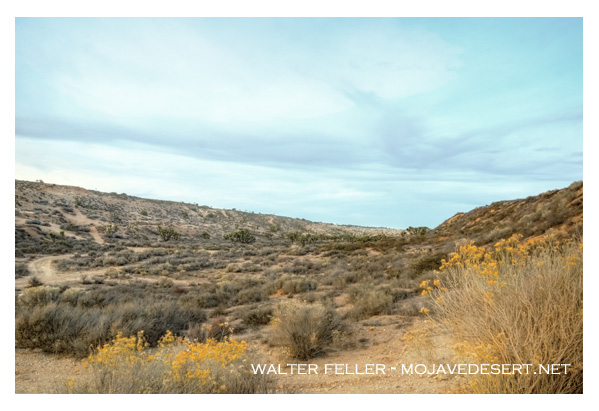About the Old Spanish Trail

Oro Grande wash, Victorville, CA
The Old Spanish National Historic Trail was designated as
part of the National Trails System in 2002. The trail
connected New Mexico’s frontier colonies to their
counterparts in southern California in the early 19th century.
There was money to be made in transporting New Mexico
serapes and other woolen goods to Los Angeles, and in
wrangling California-bred horses and mules back to Santa Fe.
But a viable overland route across the remote deserts and
mountains of Mexico’s far northern frontier had to be found.
Spain’s colonists had sought an overland route between New
Mexico and California for more than 50 years.
Mexican trader
Antonio Armijo
led the first commercial
caravan from Abiquiú, New Mexico, to Los Angeles late in
1829. Over the next 20 years, Mexican and American traders
traveled variants of the route that Armijo pioneered,
frequently trading with
Indian tribes
along the way.
The complex network known today as the Old Spanish Trail
evolved from a combination of indigenous footpaths, early
trade and exploration routes, and good pasture and water for
the pack trains and stock drives. After the United States took
control of the Southwest in 1848, other routes to California
emerged, and use of the Old Spanish Trail sharply declined.
The Old Spanish Trail was primarily a
mule pack route between Santa Fe and Los Angeles,
which developed partly from a network of American Indian and Hispanic trade routes. Although
primarily a trade thoroughfare, it also was used by
explorers,
trappers,
prospectors, and
immigrants. In
1847, Mormons initiated wagon travel along the western half of the trail while traveling between Salt
Lake City and Los Angeles. The Mormon wagon route replicated or paralleled the Old Spanish Trail for
most of the distance between the present-day communities of Paragonah, Utah, and San Bernardino,
California.
Two main routes emerged—the Armijo (Southern) Route and the Northern Route. The North Branch of
the Old Spanish Trail through the San Luis Valley and Gunnison River country of Colorado and eastern
Utah was a variant of the Northern Route. Fur trappers were the predominant users of the North Branch.
It is commonly said that the Old Spanish Trail was neither “old” nor “Spanish.” The first documented
use of the name came from
John C. Frémont
in the 1840s, and the name was picked up and used by
others, principally Anglo-American travelers. Nineteenth-century Mexican traders in New Mexico
referred to it as the "Camino de California," and Californios referred to it as the "Camino de Santa Fe"
About the Old Spanish Trail
American Indian groups
Spanish colonial interest
In late summer of 1826
A major variation of the Old Spanish Trail
The major reason for travel
There was considerable legal trade
Some of the vast fur trade
Hispanic New Mexican families
Americans and other foreigners
With the American takeover of California
Over the years a number of military groups
Overall, use of the Old Spanish Trail

Detail from Fremont's 1848 explorations map